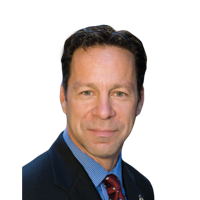Management
Management
Quality Function Deployment (QFD) recommends first focusing on the voice of the business.
Read More
Management
ISO 16355: The New Standard for QFD, Part 1
Like many modern quality systems, Quality Function Deployment (QFD) emerged from Japanese manufacturing.
August 26, 2024
Management
Best For The World: Holistic Quality Leadership
Through improvement methods like Lean Six Sigma, root cause analysis and so many others, quality has already made a large contribution to making organizations more sustainable.
August 25, 2024
Management
What an 1894 Crisis Has in Common with the Climate Change Crisis
Just as the development of the automobile and the shift towards electricity helped alleviate problems of the past, modern innovations like renewable energy, electric vehicles, and carbon capture technologies are essential in combating climate change.
August 24, 2024
Management
Electric Vehicles and a Systematic Approach to Climate Change
The urgency of addressing environmental issues cannot be overstated. To achieve a sustainable future, we must adopt this approach that considers the interconnections between social, economic, and environmental factors.
August 23, 2024
From the Editor | Darryl Seland
The Singularity – The Promise of Technology?
August 14, 2024
Management
The Role of Kaizen in Mass Customization for Industrial Environments
And how existing continuous improvement techniques can be applied to how goods and services are designed, produced, and delivered to meet unique customer requirements.
August 8, 2024
Lean with Lazarus | Ian R. Lazarus
Don’t Surrender to System 1!
System 1 is satisfied to draw conclusions with limited data, and more often than not, System 2 never bothers to get involved;
August 6, 2024
NCSLI
The Importance of Close Out Calibrations
Our intent is to bring awareness to the importance of close out calibrations and where not possible as in the case of catastrophic failure, having a system in place that provides confidence that non-conforming parts have not been released.
August 5, 2024
Stay in the know with Quality’s comprehensive coverage of
the manufacturing and metrology industries.
eNewsletter | Website | eMagazine
JOIN TODAY!Copyright ©2024. All Rights Reserved BNP Media.
Design, CMS, Hosting & Web Development :: ePublishing












